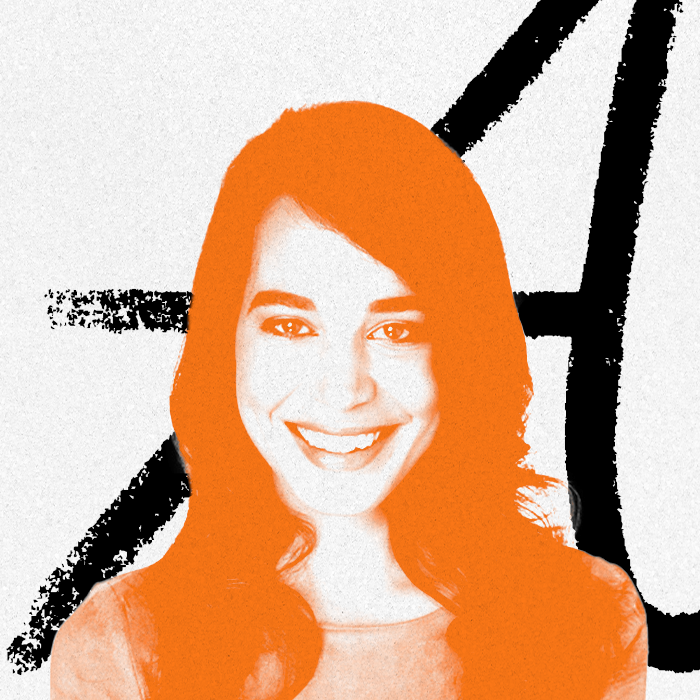
Sponsored By: Gamma
TL;DR: Today we’re releasing a new episode of our podcast How Do You Use ChatGPT? I go in depth with Anne-Laure Le Cunff, founder of experimental learning community Ness Labs, prolific writer of a newsletter with nearly 70,000 subscribers, Ph.D. candidate at King’s College London, and budding author. We explore how she uses ChatGPT to expand her mind and get everything done. Watch on X or YouTube, or listen on Spotify or Apple Podcasts.
Anne-Laure Le Cunff might be the most productive person I’ve ever encountered.
She’s the founder of Ness Labs, a newsletter and learning community of almost 100,000 curious minds aspiring to achieve their goals and keep their mental health at the same time. She’s a Ph.D. candidate in psychology and neuroscience at King's College London. As if that’s not enough, she’s also writing a book with a major publisher on the intersection between curiosity and ambition.
It’s a mind-bending list of ambitious projects, and I was pleasantly surprised when she told me she can only do it all because of ChatGPT. It seemed almost too good to be true, but as we got deeper into the interview, I saw how much AI has seeped into every corner of her life.
It saves her time on the administrative tasks required to run her business. It helps her create better outlines so that she can write pieces more efficiently. It even breaks down complex research papers so that she can incorporate them into her Ph.D. work.
In the last segment of our interview, we explore ChatGPT together and use it to help her tune and improve her meditation practice—live on the show.
Say goodbye to basic slide presentations. Gamma uses cutting-edge AI to revolutionize how we share ideas. It's not just a tool; it's a creative assistant, enabling you to create visually captivating content quickly and seamlessly. Whether you're presenting to a small team or a large audience, Gamma ensures your ideas shine across all devices and platforms. Experience the difference for free!
This episode is a must-watch for curious, creative people who are excited about executing their ideas mindfully and want to get more done. Here’s a taste:
- ChatGPT to save time. Our to-do lists are cluttered with small tasks that take much longer than they should. Anne-Laure uses ChatGPT to write job descriptions or grant proposals that gets her “80 percent” there. “I don't think I would be able to do everything I'm doing at the moment if ChatGPT didn't exist,” she says.
- Breaking down dense documents. ChatGPT saves Anne-Laure even more time by helping her quickly understand the gist of research papers. She uploads a PDF to ChatGPT and asks it questions to determine if it “belongs in the ‘to-read’ pile.” It’s useful to have “four bullet points instead of…30 pages,” she explains.
- Using ChatGPT to generate custom explanations. While reading research papers, Anne-Laure uses ChatGPT to clarify unfamiliar concepts by translating jargon from other fields of research into terms she understands. She recommends asking ChatGPT to “explain it to me like I’m [insert whatever you are, what your role is, and what your current knowledge] is.”
- ChatGPT to unearth information hiding on the internet. ChatGPT helps her discover the internet’s hidden gems, what she calls “internet ghosts.” Most recently, she used it to find the recipe of an obscure Algerian cheese that Google couldn’t find.
- ChatGPT as an expert in specific domains. Anne-Laure revamped her YouTube thumbnails in 90 minutes, using ChatGPT to generate creative briefs from the video transcripts, and Canva for design. “[T]he fact that I could get this brief based on just pasting the transcript [into ChatGPT], I was absolutely amazed,” she says.
- ChatGPT as a developmental editor. Anne-Laure feeds ChatGPT a rough outline of articles she’s working on, instructing it to wear its “editor’s hat” and highlight any gaps. She values its ability to identify “different angles and perspectives” she wouldn’t have otherwise considered.
- Finetuning a draft with ChatGPT. Once Anne-Laure has finished writing the piece, ChatGPT helps her refine it. “I upload it back into ChatGPT, and then I ask it again, if I'm missing anything, and if there's anything that I can do to improve the clarity, the flow, or the accessibility of the argument,” she says.
- Using ChatGPT to brainstorm perspectives. In the last segment of the interview, we use ChatGPT to analyze Anne-Laure’s meditation journal. We ask ChatGPT to list the types of professionals that might have an interesting take on the journal, and it suggests a physiologist, a healthcare professional focused on the functioning of the human body, an angle that Anne-Laure “hadn’t really thought about.”
- ChatGPT for advice tailored to you. We ask ChatGPT to simulate a physiologist and suggest ways for Anne-Laure to feel more comfortable while meditating, and it uses her journal entries to generate solutions suited to her. “[I]t’s so nice to have feedback based on my actual experiences, rather than just random tips,” she says.
You can check out the episode on X, Spotify, Apple Podcasts, or YouTube. Links and timestamps are below:
- Watch on X
- Watch on YouTube
- Listen on Spotify (make sure to follow to help us rank!)
- Listen on Apple Podcasts
Timestamps:
- Introduction 01:10
- How to use ChatGPT to save time running a business 02:11
- Tips to breakdown research papers with ChatGPT 05:17
- How to use ChatGPT to generate explanations tailored for you 09:38
- Leveraging ChatGPT to find hidden gems on the internet (like recipes for obscure cheese) 19:51
- How to create awesome YouTube thumbnails with ChatGPT 33:47
- Incorporating ChatGPT into your writing process 51:13
- Rapid-fire questions from X 56:52
- Surfacing useful insights from Anne-Laure’s meditation journal 1:13:01
- The case for journaling in the age of AI 1:29:04
What do you use ChatGPT for? Have you found any interesting or surprising use cases? We want to hear from you—and we might even interview you. Reply here to talk to me!
Miss an episode? Catch up on my recent conversations with a16z podcast host Steph Smith, OpenAI developer advocate Logan Kilpatrick, clinical psychologist Dr. Gena Gorlin, economist Tyler Cowen, writer and entrepreneur David Perell, software researcher Geoffrey Lit, Waymark founder Nathan Labenz, Notion engineer Linus Lee, writer Nat Eliason, and Gumroad CEO Sahil Lavingia, and learn how they use ChatGPT.
If you’re enjoying my work, here are a few things I recommend:
- Subscribe to Every
- Follow me on X
- Subscribe to Every’s YouTube channel
- Check out our new course, Maximize Your Mind With ChatGPT
My take on this episode and the transcript is for paying subscribers.
Thanks to Rhea Purohit for editorial support.
Dan Shipper is the cofounder and CEO of Every, where writes the Chain of Thought column and hosts the podcast How Do You Use ChatGPT? You can follow him on X at @danshipper and on LinkedIn, and Every on X at @every and on LinkedIn.
The Only Subscription
You Need to
Stay at the
Edge of AI
The essential toolkit for those shaping the future
"This might be the best value you
can get from an AI subscription."
- Jay S.
Join 100,000+ leaders, builders, and innovators

Email address
Already have an account? Sign in
What is included in a subscription?
Daily insights from AI pioneers + early access to powerful AI tools






.png)

Comments
Don't have an account? Sign up!